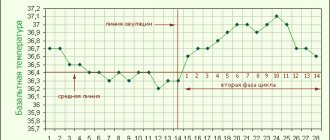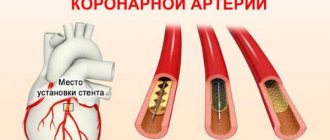Medical information is reliable Checked by Eremin Alexey Valentinovich
Oligophrenia or mental retardation is a deviation of a congenital or acquired type. It is characterized by a violation of the intellectual sphere, inadequate development of mental functions. One of the features of oligophrenia is a defect in the emotional-volitional spectrum. This leads to difficulties in the process of social adaptation.
Doctors have extensive experience working with patients of this type. In order for the result of correctional measures to have a pronounced effect, the treatment program is compiled individually for each person who contacts us. It takes into account the patient’s age, causes and symptoms of the disease, history of its manifestation, as well as other factors.
Degree of severity of oligophrenia
There are four degrees of mental retardation in total. Each stage of this condition is characterized by its own symptoms.
- Easy.
Assumes the development of intelligence at the level of 50-59 points. Mental characteristics correspond to the age of 9-12 years. Patients are able to take care of themselves in everyday life independently, they are trainable and communicative.
Good upbringing conditions created by parents allow such people to achieve good success in various activities. Characteristic features of this stage include a lack of initiative, slowness in action and decision-making. Such a patient constantly imitates adults, even if he has no family ties with them. The danger lies in the inability to suppress sexual desires. Actions can be unpredictable, causing harm to others.
- Moderate.
This degree is typical for people whose IQ is in the range of 35-59 points. The psychological age of the patient remains at 6-9 years. Patients experience difficulties in mastering new material; their speech is monosyllabic, sometimes completely unintelligible. Basic self-care skills are present, but mentally retarded people require care from loved ones. They can communicate through words and short sentences and are able to express their basic thoughts.
- Heavy.
Indicators of mental activity are in the range of 20-34 points. Intellectual potential corresponds to the age of 3-6 years. Patients understand some words addressed to them. It is possible to reproduce simple sentences, often this is a request to satisfy basic needs. Emotions manifest themselves at the level of joy and sadness, pleasure and irritability. Other sensations and feelings are inaccessible to them.
- Deep.
In terms of development, the patient does not exceed the level typical for a 3-year-old child. The maximum possible level of intelligence is 20 points. The patient cannot speak, cannot perform basic everyday activities, or care for himself. Thinking, memory, perception and other processes are practically not developed. Strong limitations in emotions make any communication with others impossible. The patient is unable to perform productive activities.
Among the characteristic features of this stage of mental retardation, the following signs are distinguished:
- communication is carried out through grimaces and simple gestures;
- patients are not able to feel mental pain, they do not cry or laugh;
- there is no play activity in principle; if a car or doll falls into the hands of such a child, they instantly break or are stuffed into the mouth;
- poor coordination of movements, chaotic swaying of the body in different directions is often observed;
- eating is complicated by a violation of the swallowing reflex, the patient cannot or does not know how to chew independently, there is a violation of the sense of smell and taste.
Such patients require round-the-clock care, so treatment of mental retardation is recommended in a hospital setting.
FEATURES OF CHILDHOOD DEMENTIA
Preschool age only forms a personality, which is characterized by many factors: developmental characteristics, temperament, individuality.
Only after the child goes to school can parents identify a developmental disorder. Such children practically do not master the program. It is not possible to attract the attention of oligophrenics and fix it on something. Difficulties arise with memorization and retelling—children suffering from ID are unable to retain received information in memory for a long time.
A “special” student usually does not understand the essence of the task and does not grasp the connections between things and phenomena. It is very easy to intimidate him in such a situation: you just have to shout, and the psychological trauma that follows the stress is inevitable.
Depending on the environment, such a child can develop into two completely different personality types:
- kind and sympathetic, ready to help at any moment, vulnerable and warm-hearted;
- embittered and aggressive, who, having no desires and feelings of their own, are subject to the negative influence of others.
A practicing psychotherapist shared the story of a boy who was doomed to mental illness while still in utero development. A dysfunctional mother carried a child in violation of all acceptable rules: she smoked, drank alcoholic beverages, and took psychotropic drugs. After the birth of the child, he was deprived of proper attention.
After some time, the visiting nurse noticed some mental underdevelopment of the baby: he could not hold his head up on his own and did not make any sounds. Thanks to the prompt and coordinated work of medical workers, the boy was saved. And at the moment it has practically adapted to modern living conditions.
A predisposition to mental illness or unacceptable behavior of a pregnant woman is a reason to warn her about the possible dementia of the unborn child.
However, a loving and caring mother who leads a healthy lifestyle and has absolutely no prerequisites for the occurrence of mental pathologies can also face the problem of dementia in her child.
Having noticed the first alarm bells, which are a definite reason for consultation, you must immediately contact a qualified specialist. This will give you the opportunity to deeply adapt your baby to society before the moment of his socialization.
Symptoms of oligophrenia
Patients experience not only a lag in the development of intelligence, but also a deterioration in the functions of higher mental activity. Moderate, severe and deep degrees of mental retardation are visible to the naked eye. Such a child looks tired and weakened. Concentration of attention is reduced, during educational activities he is lethargic and passive. If the teacher addresses him at this moment, most often no reaction follows.
Some patients exhibit unreasonable and prolonged anxiety. They are constantly in motion, but its nature is chaotic and multiple. Impulsivity in actions often leads to bad actions and attempts to harm others. The ability to self-control is reduced or absent altogether.
With mild mental retardation, the patient can master various professional skills, if they are simple enough. After some time, there is a decrease in performance, the person is distracted and cannot concentrate on one object or process.
This disease is accompanied by memory impairment. The patient remembers bright details that are attractive to him, and over time he can remember and talk about them. Most patients are diagnosed with speech underdevelopment. If this pathology develops in infancy, until the age of five such children do not speak, they only make a series of incoherent sounds. Hearing develops with great delay.
The developmental delay is noticeable at the physical level. Such patients often have facial and ear defects, an unusual head shape, and inadequate development of the genitals. In severe and profound forms of mental retardation, the mouth is constantly slightly open, and salivation is usually present.
Learning basic skills in these forms of oligophrenia is difficult. Caring for such patients is very difficult. They do not signal their physiological needs in time, satisfying them anywhere. It is impossible to teach a mentally retarded person how to help in everyday life. Contacting a psychiatric department allows you to temporarily shift the round-the-clock care of the patient to the shoulders of the medical staff.
SIGNS OF MILD UR
Mental underdevelopment with decreased intelligence, congenital or acquired, can be noticed in very young children, three years old. However, the diagnosis is made no earlier than the child reaches seven years of age.
Signs of mental retardation in newborns are almost impossible to detect, especially its mild form. But then this will manifest itself in developmental delays and difficulties in adapting to kindergarten. It is difficult for a child to communicate with peers, find a common language with them, maintain a daily routine, master new skills, and absorb knowledge. He cannot sit in one place, gets tired quickly, does not show any desire to understand the world, and is inattentive.
A child may have a similar but passing problem - mental retardation. The difference is that a child with mental retardation is not always able to learn a new skill, while a child with mental retardation still learns it after several repetitions.
This is why it is so important to detect the symptoms of MR early in order to begin corrective measures immediately. Here they are:
- Abnormal motor development. The baby begins to hold his head up late, tries to sit up, stand up, and walk. His grasping reflex is impaired, he is unable to hold a toy, and a little later, a spoon.
- The processes of excitation and inhibition are unbalanced - the baby is overly impulsive, irritable, or excessively lethargic and slow.
- Belated babble. He begins to speak with a significant delay or there is no speech at all. The child is not able to speak coherently, as it is difficult for him to construct a sentence. He does not understand what is being said to him, so he cannot fulfill even basic requests.
- Poor emotional-volitional sphere, self-isolation, lack of interest in what is happening around.
- There is no interest in toys, their incorrect use prevails, preference is given to primitive games.
- There is no abstract thinking, that is, logic, mathematical and creative abilities.
A few words should be said about emotions: the child experiences grief and joy, hostility and sympathy, is sad and happy, but all this is expressed very weakly, not in many ways.
Outwardly, such a child is no different from his peers. But his inability to concentrate properly leads to learning difficulties.
Children with a mild degree of ID are afraid of a change of environment and are highly dependent on their parents and educators. Difficulties in recognizing emotions create problems with communication, so kids withdraw into themselves. But it is also possible that they draw attention to their person in different ways, often very awkward.
Such individuals are well aware that they are different from healthy people, so they take measures to conceal their problem. Many people manage to gain self-care skills, although this happens more slowly than their peers. The school period is especially difficult for them, since writing, reading and mathematics are difficult for them.
Causes of the disease
There are many factors that can become provocateurs in the development of mental retardation. Among the most common primary sources of pathology are:
- Exposure of a pregnant woman's body to poisons and chemicals. Hazardous substances cause intoxication of the body, are integrated into metabolic processes and lead to their disruption. This condition can develop under the influence of certain medications. If a pregnant woman takes them in doses that violate acceptable limits, the fetus’s body suffers first.
- Infectious diseases in the expectant mother. These include influenza, scarlet fever, rubella and others.
- A metabolic disorder that led to the development of a severe form of female dystrophy. Weight is rapidly decreasing, and the weight of the fetus is also becoming smaller. Organs and tissues can no longer perform their functions at the same level.
- Injury to the fetus that occurs as a result of a bruise, fall, or blow to the stomach of the expectant mother. Mental retardation often results from damage to the newborn during labor and the application of forceps.
- Retardation develops if the body of the mother, as well as the fetus, has been infected with parasites. The most dangerous disease is toxoplasmosis, transmitted from domestic animals (cows, pigeons, cats, dogs), as well as from mice and other small wild fauna.
- Hereditary predisposition. Mental retardation is transmitted at the genetic level. This disease develops if there is a chromosomal disease or incompatibility of the Rh factor of the blood of the mother and child.
- Inflammation of the meninges that occurs in a newborn often provokes mild or moderate retardation.
- Disturbance of protein metabolic processes, phenylketonuria.
- Poor ecology or exposure to radiation.
- Bad habits of one of the parents - alcoholism and drug addiction. It is especially dangerous if the mother is diagnosed with addiction. Typically, such patients do not stop taking alcohol or drugs even after learning about pregnancy.
- Poor nutrition, which leads to retardation in mental and physical development.
Therapy for this disease is possible when patients are admitted to an inpatient psychiatric hospital. Often they themselves cannot express their desire to undergo treatment, not realizing that they are really sick. Permission from relatives or guardians is required. Husband, wife, children, parents sign an agreement with the clinic, which describes the rights and obligations of each party.
REASONS FOR APPEARANCE
As mentioned above, brain damage and structural defects are to blame for underdevelopment of the brain. There are the following main groups that determine the presence of a control system:
- hereditary diseases (chromosomal and genetic);
- intrauterine infections - toxoplasmos, rubella and others that negatively affect the fetus;
- maternal consumption of toxic substances, alcoholic beverages, strong drugs, radiation, smoking;
- fetal prematurity;
- problems during childbirth and in the first months of a child’s life - oxygen starvation, mechanical head injuries, infectious diseases;
- lack of normal upbringing, training and socialization, the impossibility of full-fledged brain function as a result of this;
- unknown etiology.
Diagnosis of mental retardation
Most cases can be recognized in early childhood through routine observation of the child. If his behavior goes beyond the norm, it is necessary to urgently contact a neurologist or psychiatrist.
The diagnosis of “mental retardation” is made on the basis of the collected medical history. During a personal conversation, the child's development is assessed. The doctor must know what the mother’s pregnancy was like and the list of diseases she suffered. It is important to inform him about genetic factors and cases of development of pathology in close relatives. Intentional distortion of information makes it difficult to make a correct diagnosis.
At this moment, it is possible to detect a violation of the patient’s speech and hearing, determine how developed the vocabulary is, the ability to think abstractly. Passing psychological tests allows you to determine the extent of the disease. The most common is the Wechsler test. It consists of a certain number of subtests, each of which is aimed at studying certain aspects of the patient’s mental sphere.
In the process of studying the level of memory development, the patient is asked to remember words and then reproduce them. The study of thinking involves understanding the meaning of proverbs, metaphors and other sayings. The causes of pathology can be identified using laboratory methods.
Features of mental development and thinking in children with mental retardation
Any child with mental retardation is different from another with the same diagnosis, due to the fact that each has its own characteristics of brain function, immaturity or deficiency of its structures and sections, as well as intact links.
L.S. Vygotsky believed that the primary defect of mental retardation is inertia, stiffness of the main nervous processes, as well as weakness of orienting activity, which underlies the child’s reduced activity and lack of interest in the world around him. A secondary defect is underdevelopment of higher mental functions. In turn, when a child finds himself in conditions of an inadequate teaching and educational environment, opportunities arise for the development of a tertiary level defect, namely, behavioral disorders and characteristics of the emotional-volitional sphere. In addition, the following features can be highlighted:
- Most authors prove that cognitive disorders in such children consist of difficulties in forming concepts and generalizations, difficulty in abstract thinking;
- A child with mental retardation is poorly taught; it is difficult for him to perceive any new information;
- As the child grows up, all of the above is accompanied by a poverty of outlook and superficiality of thinking.
Treatment of mental retardation in Moscow
Therapy for this disease is predominantly symptomatic. After diagnosis, the specialist will select a suitable drug that can normalize the patient’s condition. Treatment of mental retardation in Moscow is carried out by psychiatrists and psychotherapists.
If mental retardation develops against the background of dysfunction of the thyroid gland, additional medications are iodine-containing drugs and hormones. With phenylketonuria, it is important to follow a diet and avoid foods that are hazardous to health.
The administration of nootropic drugs, B vitamins and amino acids can improve the processes of brain activity. Behavioral disorders are corrected with the help of antipsychotics and tranquilizers.
If the patient experiences increased activity, nervousness and multiple chaotic movements, sedatives are indicated. They will help you calm down and normalize your sleep and wakefulness patterns. Doctors often prescribe herbal-based medications that cannot be harmful to health or cause addiction.
For lethargy, nervous system stimulants with a “mild” effect are used. The dosage of all drugs depends on the stage of the disease and the individual characteristics of the body.
It is important to understand that mental retardation is not a death sentence for parents. Over time, they will learn to understand the needs of their child and respond to them correctly.
A timely visit to a psychologist will help the child adapt to living conditions in a group. Healthy children do not understand or accept those who have a lower level of intelligence. Against this background, conflicts arise from which the children themselves and their parents suffer.
A psychologist works not only with the patient, but with people close to him. He explains why violations manifest themselves the way they do and what needs to be done in a particular case. Corrective sessions allow you to develop new and improve existing self-care skills. For concomitant speech disorders, sessions with a speech therapist are indicated.
PREVENTION AND TREATMENT
In order to prevent the development of mental retardation in the womb, pregnant women who have an unfavorable history (physiological indicators, predisposition) are recommended to undergo a more thorough examination. Doctors place women under special observation who suffered from viral diseases during pregnancy.
Birth injuries received by newborns, as well as infectious diseases they suffered at an early age, can lead to brain damage.
A child with mild mental retardation has the opportunity to develop and learn within the limits of his biological capabilities. This pathology is incurable, but its timely and competent correction will make it possible for such a person to become a full-fledged member of society, albeit with limited abilities. A special role in this case is played by the environment and perception. There is no doubt that such people require increased attention.
Mental retardation requires close contact with loved ones, teachers, doctors, and psychologists. The doctor selects specialized institutions for children with mental development problems taking into account the child’s capabilities and abilities. Additionally, the psychotherapist can prescribe medication support using pharmacological drugs. Medical and educational measures and labor training for the mentally retarded show good results.
It is always important to remember that any mental illness is not a death sentence. The main thing is to contact a specialist in time, who will help make your stay in society as comfortable and fruitful as possible for the patient.
In the case of mild oligophrenia, experts give a relatively favorable prognosis. This applies to cases not burdened with concomitant psychopathological and somatoneurological disorders. People with such deviations are quite capable of mastering certain types of professions, can adapt to independent living, and even create families.
Reviews about the clinic
Here you can undergo a course of treatment for mental retardation in order to improve the patient’s adaptive capabilities. Often, the patient’s relatives do not have enough information about treatment methods, duration of therapy and stages of the disease. On this page you can read reviews from real people that contain information of interest.
We do not influence their content in any way; we constantly improve the quality of service and improve our qualifications. Any of our patients who want to express their opinion on the pages of our resource can leave a review. If you do not find the information you are interested in, call our call center. The specialist on duty will provide reliable information within a few minutes.
Symptoms and stages of oligophrenia
The main signs of mental retardation are:
- difficulties with assimilation of new information;
- difficulties with communication, social interaction;
- memory impairment, especially short-term;
- impairment of visual-spatial perception, which makes it difficult for the patient to dress independently and perform simple hygiene procedures;
- hyperactivity; in adolescence, attacks of anger and irritability are possible.
Somatic disorders are also characteristic. Many children with mental retardation are additionally diagnosed with hearing and vision problems, movement disorders (involuntary, uncoordinated movements, spasms), and are often diagnosed with epilepsy, and seizures can begin already in infancy.
In some cases (especially if mental retardation is caused by genetic defects), characteristic external signs are noted, in particular:
- blond hair, blue eyes, vitiligo due to pigmentation disorders;
- joint hypertrophy;
- protruding belly;
- “X-shaped” lower limbs;
- swelling;
- slanted eyes, flattened bridge of the nose;
- prominent cheekbones, ears pressed to the skull, etc.
Causes
Intellectual disability is the result of genetic diseases and many other factors, or rather, their combination: behavioral, biomedical, social, educational.
| Causes | Factors | |||
| biomedical | social | behavioral | educational | |
| Intrauterine development of the fetus (prenatal) | -age of parents; - diseases in the mother; -chromosomal disorders; -congenital syndromes | the mother's miserable existence, she was subjected to violence, was poorly fed, did not have access to medical services | parents used alcohol, tobacco, drugs | parents are not prepared for the birth of a child, are cognitively incompetent |
| Birth of a child (perinatal) | -prematurity; - birth injuries | poor baby care | child abandonment | lack of medical supervision |
| Later life (postnatal) | -bad Education; -brain injuries; -degenerative diseases; -epilepsy; -meningoencephalitis | -poverty; -poor family relationships | -domestic violence, harshness towards the child, isolation; -failure to comply with safety measures; -bad behavior | -poor quality medical care and late diagnosis of diseases; -lack of education; -lack of support from other family members |
No one can accurately name the specific “culprits,” even despite fairly scrupulous research and early diagnosis. But, if you analyze the table, the most likely cause of oligophrenia may be:
- any genetic failures - gene mutations, their dysfunction, chromosomal abnormalities;
- hereditary developmental disorders;
- malnutrition;
- infectious diseases of the mother during pregnancy - syphilis, rubella, HIV, herpes, toxoplasmosis, etc.;
- premature birth;
- problematic childbirth - asphyxia, mechanical injuries, hypoxia, fetal asphyxia;
- insufficient upbringing of the child from birth, parents devoted little time to him;
- toxic effects on the fetus leading to brain damage - parental use of strong drugs, drugs, alcoholic beverages, smoking. This also includes radiation;
- infectious diseases of the child;
- skull injury;
- diseases affecting the brain - encephalitis, whooping cough, meningitis, chicken pox;
- drowning.
Diagnosis of oligophrenia
The diagnosis of oligophrenia is made in accordance with generally accepted international criteria. If the results of the Wechsler questionnaire are not indicative, other tests are used, adapted taking into account age characteristics. In addition, family history is also taken into account, and if necessary, tests are prescribed to identify genetic mutations and metabolic disorders. Differential diagnosis can be difficult, since almost 70% of patients with moderate to severe mental retardation also have other mental disorders.
To identify and determine the severity of possible organic brain lesions, it is recommended to do MRI , angiography of cerebral vessels, and radiography.
Children with intellectual disabilities
Society must be tolerant of people with mental retardation; a special approach and teachers are needed who know the specifics of the work, who can give intellectual disabilities an education and help them realize their potential.
Children with disabilities need the support of others, especially parents, who must provide such children with psychological comfort, development, and improve their quality of life.
In infants, it is quite difficult to identify mental retardation, especially its mild form, since they are almost no different from others. But their activity is impaired: they begin to hold their heads up late, babble, sit, and crawl.
But as the child grows up, when he begins to go to kindergarten, it becomes noticeable that he has difficulty maintaining a daily routine, communicating with peers, and mastering new skills. For example, a three-year-old child cannot assemble a pyramid on his own, although he repeated this many times with the teacher. My classmates succeeded after 1-2 lessons.
Oligophrenic children are not inquisitive; they cannot sit in one place for a long time, but they get tired very quickly. Their speech is poor, they confuse letters (especially consonants). Since their phonemic hearing and analysis are poorly developed, they pronounce words incorrectly, and then write incorrectly. The development of auditory discrimination and the articulatory speech apparatus lags behind - hence slurred speech.
Gross and fine motor skills suffer as the central nervous system develops abnormally. The baby's movements are uncertain and sluggish, he manipulates objects chaotically. For a long time he cannot determine the “main” hand; he moves both of them inconsistently.
Difficulties with the “pinch” and “tweezer” grip do not allow the child to hold a pencil and pen correctly and learn to write. Underdevelopment of fine motor skills also makes it difficult to care for oneself.
The child cannot concentrate and remember something. This negatively affects cognitive activity and mental activity. The baby does not see or hear what is said to him due to attention problems.
Studying is difficult for such children: they learn the material slowly because they do not remember it and cannot reproduce the information received. They cannot apply the skill or knowledge they have learned after repeated repetitions and quickly forget it.
The child is not able to express feelings verbally, because he has poor speech, but he expresses emotions through facial expressions, touches, and gestures. He is incapable of empathy. His will is weak, so he is trusting of any person, easily suggestible, and this is very dangerous.
Contact a specialist (neurologist) without delay if your child behaves unusually or you do not understand what is happening to him. The benefit of this is double - in the best case, all doubts about the adequacy of your child will be dispelled, and in the worst case (which, however, is also not bad) - early diagnosis will allow you to immediately take measures to solve the problem. This will allow such a child to be better socialized and adapted to life.
The doctor will examine the little patient, ask the parents about the symptoms, when they appeared, about the child’s practical and social skills, adaptive behavior, etc. An intelligence test is required to find out how teachable the child is, how he can solve problems and think abstractly. An IQ below 70 may indicate the presence of intellectual disability and its level.
Tips for parents
The following recommendations can be given to mothers and fathers of special children:
- Of course, hearing such a diagnosis for your child is a terrible blow, causing negative thoughts. There is a feeling of guilt, resentment at fate, anger, despair, melancholy. But you still have to accept this fact, come to terms with it, and communication with other parents who have a similar problem can be a good support. It’s also a good idea to visit a psychologist.
- You need to clearly separate your capabilities from what is impossible to do and, without giving up, look for ways to solve problems and means.
- Consult with specialists. It is also advisable to collect as much information as possible from serious sources about mental retardation, how and how you can help the child, what exactly should be done, where to go. The experience of families with an oligophrenic child is invaluable, communicate with them.
- Learn about and take advantage of government and community services for families with children with mental retardation.
- Think not about limitations, but about your child’s capabilities, what he can do and what he needs, how to please him. It is in your power to help him become independent and socialize as much as possible.
- Under no circumstances isolate your child from other people, neither children nor adults.
- Despite the fact that the level of development of your child at certain stages is lower than that of his peers, you need to communicate with him not as with a baby, but in accordance with his age.
- It is necessary to regularly conduct developmental and training sessions. The goal of education is social adaptation, that is, the child must master speech, writing, and everyday independence.
Don’t expect anything special from all your efforts, some super-result, be happy with the smallest progress. But we shouldn’t stop there either. Even if you understand your child by individual words, this is not enough for communication with others and social adaptation. Move on, don't give up and don't indulge your child's laziness.
To reduce the likelihood of having a mentally retarded child, a pregnant woman should:
- DO NOT drink, smoke or take drugs;
- take folic acid;
- visit a doctor regularly;
- Eat a diet containing fruits and vegetables, whole grains, and foods low in saturated fat.
After the baby is born:
- carry out screening of the baby - this will identify diseases that can provoke mental retardation;
- visit your pediatrician regularly;
- do all scheduled vaccinations;
- allow him to ride a bicycle only with a helmet, and to ride in a car until the required age only in a car seat;
- Avoid contact of your child with household chemicals and lead-based paints.
Support by specialists
A child with an intellectual disability needs comprehensive support throughout childhood from the following specialists:
- child psychologist and psychiatrist;
- speech therapist;
- neurologist;
- speech pathologist.
If there are other disorders (blindness, deafness, cerebral palsy, autism spectrum disorder), then a rehabilitation specialist, an ophthalmologist, a massage therapist, and a physical therapy teacher are added to the above-mentioned professionals.











